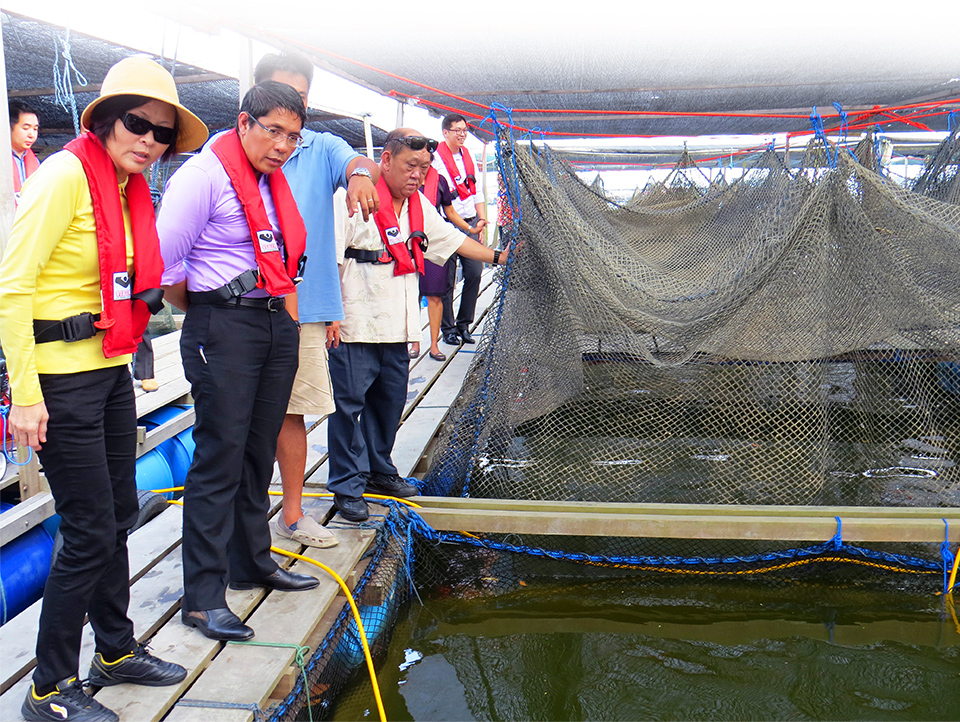Going All Out: Aiding Farmers during Fish Mortality Crisis
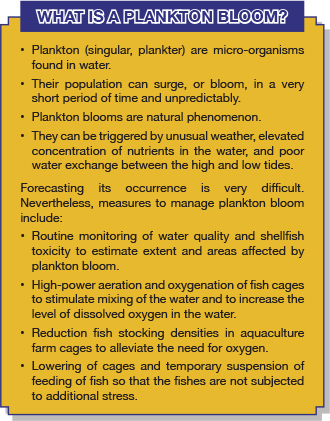
The Government is committed to grow the local fish farming industry and AVA is ever-ready to lend a helping hand. When our farmers along the Straits of Johor were devastated by a massive loss of fish stock in February 2014, we immediately rolled out appropriate initiatives to help them during this ordeal.
A dry spell and sudden neap tide in Singapore at the beginning of 2014 were the root causes of the sudden mass death of fishes. The adverse weather and tidal conditions led to a surge in the number of plankton (“plankton bloom”) and a dip in dissolved oxygen in our seawaters. As a result, about 500 tonnes of fishes died overnight. (See infographic.)
AVA took a multi-pronged approach in helping the affected farms. Firstly, our officers provided round-the-clock technical assistance such as deployment of emergency aeration systems. Visits were made to the farms to assess the situation and farm losses were documented. In addition, fish disposal services at designated sites and farm-to-farm fish collection services were offered to ensure the water is not polluted by fish carcasses.
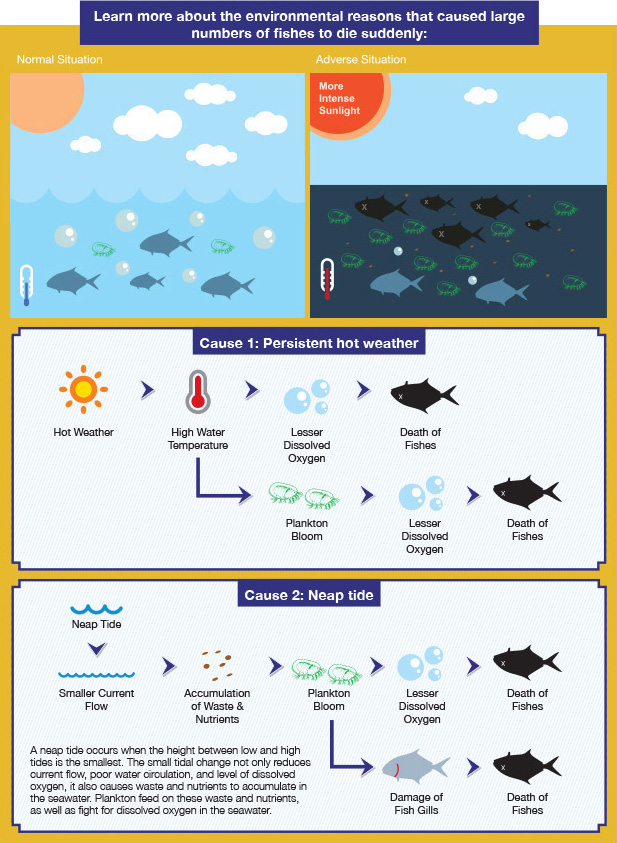
Co-funding of Fry Restock & Equipment
Additionally, AVA followed up with an assistance fund, as a shot in the arm for affected farmers to resume operations as quickly as possible. We have been co-funding 70 percent of the cost to restock farms with fry, and 70 percent of the purchase of equipment. We have also been providing technical advice on the possible types of mitigation equipment to be installed, such as water treatment systems, aerators, and water quality monitoring systems.
Initially, farmers had until August 2014 to take up the funding assistance. However, in responses to the requests from fish farmers to have more time to purchase fry and equipment, AVA extended the support until December 2014. Almost all of the affected farms took up AVA’s funding assistance, and more than 90 percent are in the process of restocking their farms. In addition, close to 40 fish farms were successful in their applications to upgrade their farming equipment.
Installation of Water Quality Monitoring Systems
Thirdly, we stepped up our monitoring of real-time water quality around the fish farming areas as part of our routine surveillance. Continuous online water quality monitoring systems have been installed at some of the fish farms. In the event of impending poor water conditions, AVA will send alerts through mass text messages and telephone calls to farmers, so that they can take precautions early to safeguard their fish stocks. Farmers are also encouraged to notify AVA when they observe unusual fish or water conditions.
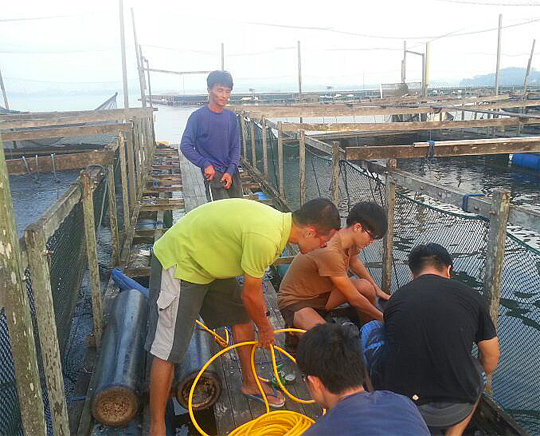 AVA officers deploying aeration systems at a fish farm.
AVA officers deploying aeration systems at a fish farm.
Metropolitan Fishery Group (MFG) for example, was one of the beneficiaries. MFG received about $570,000 for investments in solar powered aerators and water monitoring systems to enhance its operations. With the system in place, the investment paid off as the farm was not adversely affected by the mass fish deaths in February 2014.
Continued Education and Collaboration
Last but not least, we continued to educate our farmers on the critical effects of a plankton bloom and possible solutions to prevent losses caused by it. In a technical workshop held in May 2014, AVA invited experts from the National University of Singapore to inform farmers of the destructive impacts these micro-organisms have on aquaculture.
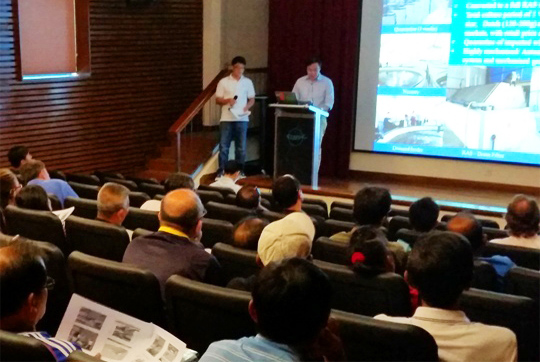 Fish farmers at a workshop organised by AVA to help them understand more about plankton blooms and closed containment aquaculture systems.
Fish farmers at a workshop organised by AVA to help them understand more about plankton blooms and closed containment aquaculture systems.
AVA also shared on how various types of closed containment aquaculture systems can help to isolate and protect the fishes in an event of a plankton bloom. With AVA’s encouragement, farmers have shown interest in developing various forms of closed containment aquaculture systems, including the Recirculating Aquaculture System (RAS), at their farms. (Read more on the RAS on pg 08.)
The aquaculture industry can also look forward to working more closely with AVA on designing a closed containment aquaculture system. AVA has received $1.25 million from the Co-Innovation Partnership (or CI Partnership) to develop a more sustainable sea-based farming system. The CI Partnership encourages companies to co-develop innovative solutions with the Government. We have received a total of six proposals and are in the process of evaluating them.



